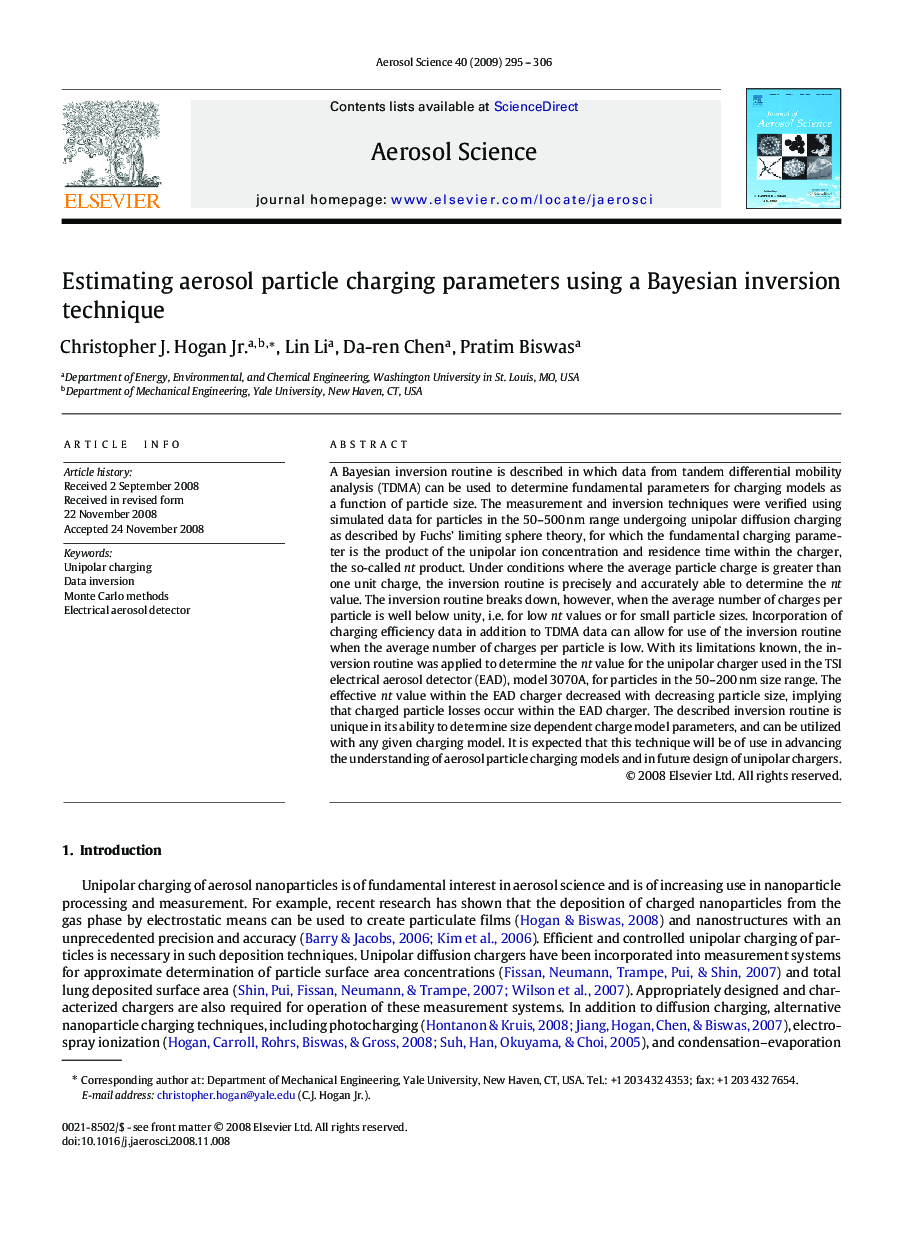| Article ID | Journal | Published Year | Pages | File Type |
|---|---|---|---|---|
| 4453058 | Journal of Aerosol Science | 2009 | 12 Pages |
A Bayesian inversion routine is described in which data from tandem differential mobility analysis (TDMA) can be used to determine fundamental parameters for charging models as a function of particle size. The measurement and inversion techniques were verified using simulated data for particles in the 50–500 nm range undergoing unipolar diffusion charging as described by Fuchs’ limiting sphere theory, for which the fundamental charging parameter is the product of the unipolar ion concentration and residence time within the charger, the so-called nt product. Under conditions where the average particle charge is greater than one unit charge, the inversion routine is precisely and accurately able to determine the nt value. The inversion routine breaks down, however, when the average number of charges per particle is well below unity, i.e. for low nt values or for small particle sizes. Incorporation of charging efficiency data in addition to TDMA data can allow for use of the inversion routine when the average number of charges per particle is low. With its limitations known, the inversion routine was applied to determine the nt value for the unipolar charger used in the TSI electrical aerosol detector (EAD), model 3070A, for particles in the 50–200 nm size range. The effective nt value within the EAD charger decreased with decreasing particle size, implying that charged particle losses occur within the EAD charger. The described inversion routine is unique in its ability to determine size dependent charge model parameters, and can be utilized with any given charging model. It is expected that this technique will be of use in advancing the understanding of aerosol particle charging models and in future design of unipolar chargers.
